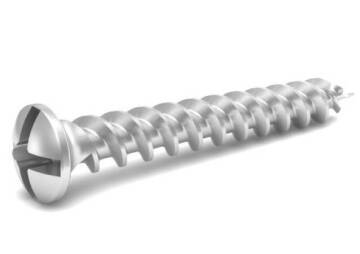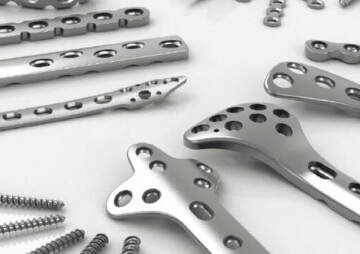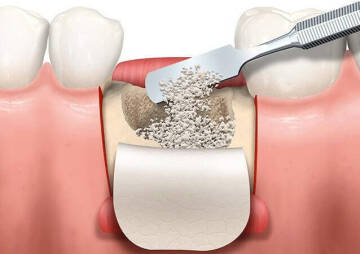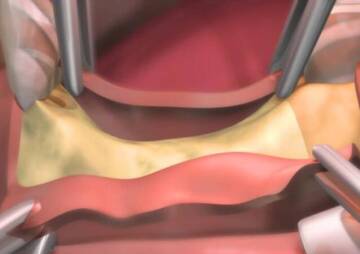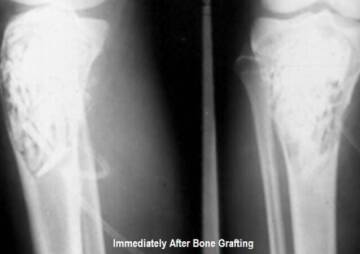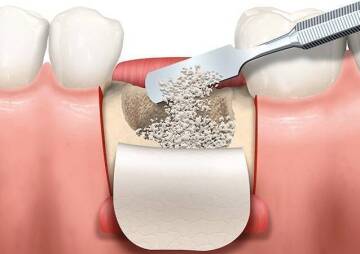-
Category
Craniomaxillofacial Surgery
Orthopedic Surgery
Spine Surgery
Orthopedic Implants
Hip Surgery
Knee Surgery
Pectus Excavatum
Bone Graft
Disinfectants
Healthcare
Bone graft complications
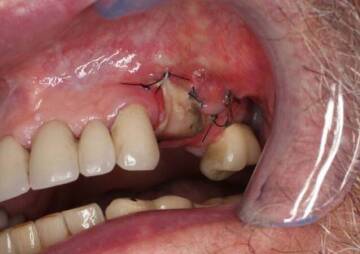
Using bone grafts in surgeries may cause some complications and risks. In this article, we investigate these complications and conditions that cause reduction or increase in the occurrence of possible bone graft risks.
Various bone grafts are used in different surgeries, from spinal fusion surgery to jaw bone surgery for dental implants and repairing the damaged jaw bone. Bone grafts can cause the stability of bones, and they can cover the weak self-repairing of the skeleton and increase their healing rate. However, using bone grafts also has its risks and complications. Actually, these complications are nothing compared to the bone grafts advantages, but awareness of these risks and the reasons for their occurrence can help you to provide the best types of bone grafts for doctors and patients and gain their satisfaction.
In this article, we investigate the bone grafts' risks and complications and the reasons for their occurrence.
What is a bone graft?
Bone grafts are used for repairing and regenerating the diseased or damaged bones in every spot of the body, even the jaw bone, and vertebral column bone. Curing multiple and complex fractures, spinal fusion surgery, resolving the bone defects due to the infection, osteonecrosis, trauma, tumors, benign cysts, Congenital anomalies, and helping the bone stability around the implants are some of the bone grafts applications.
You can obtain more information by reading this article: what is a bone graft?
Different types of bone grafts
There are two types of bone grafts: natural and artificial. The natural graft divides into three types: autograft, allograft, and xenograft.
An autograft is a bone graft that is obtained from one of the patient's bones. This graft is usually obtained from a part of the pelvic bone named the ilium. Pain and infection risk in the place that the graft was taken from it, and the need for surgical operation and anesthesia in several stages are some of the problems in this type of bone graft.
The allograft is obtained from another person's body bone who is usually dead. One of the most important cadaver bone graft risks is the infection transmission from that person to the patient.
A xenograft is a kind of bone powder used for graft and is obtained from cow's bone. Bovine bone graft risks include immune system reaction to the grafted bone.
Synthetic grafts are human-made. You can find them easily and plenty, and they have fewer complications than other types of grafts. Synthetic grafts are usually made of hydroxyapatite, and they have a three-dimensional, cancellous, and porous structure, just like the natural bone. Because of these properties, the immune response of the body to this foreign body is very low. In addition, the possibility for disease transmission from this synthetic graft is minimum.
Visit the Health News Center products in the category of synthetic bone graft.
Bone graft properties
Selected materials for bone grafting should have two essential attributes: They should be safe physiologically and neutral in stimulating the immune system.
The graft should not be a carrier for microbial diseases in terms of immunologic, and it should not be rejected. And it should be biologically compatible with body bones. It is better for the graft to be absorbed after the formation of the new bone, and it preserves its mechanical stability to regenerate a new bone. Physiologically, the bone graft should support its host in bone structure, osteoinductive, and osteoconductive.
If the bone graft had these conditions, the complications would be minimized to a minimum.

Complications of bone grafting
Bone grafting needs a surgical operation, and like every surgery, it has some risks and complications such as infection, bleeding, blood clotting, nerve damage, complications due to the anesthesia, pain, swelling, allergy to the bone grafts, and in rare cases, transmitted infection from the grafted bone. Also, bone graft rejection is a possible risk.
There are some particular conditions that cause reduction or increase in the possibility of the complications' occurrence that we will investigate in the following.

Surgical site infection
Although this is very rare, sometimes it happens. This infection forms for different reasons.
- Using a contaminated bone graft
- Contaminated surgical instruments
- Using incorrect and weak surgical techniques
- Poor post-operational cares
Infection symptoms will appear shortly after the bone grafting surgery. These symptoms include swelling and redness, discomfort, pain, and bleeding. These symptoms are typical at the early stages after surgery, but the persistence of these symptoms indicates the bone graft infection.
Synthetic bone graft allergy
Sometimes, patients show allergic reactions to the synthetic bone graft constituent material. This immune response can cause various complications such as swelling and redness in the grafted site and sometimes rejection.
Occurrence of inflammatory reaction
Some artificial materials in the bone graft stimulate inflammatory diseases in patients.
DNA damage
DNA damage is one of the side effects of synthetic bone grafting. This damage is the result of the genetic toxicity of the graft.
Bone graft exposure
One of the dental bone graft complications is the exposure of the grafted bone due to the gingival recession. In this circumstance, the blood supply of the grafted section is disrupted, and the graft will be damaged. We can overcome this complication with antibiotics at the early stages. However, if this complication is severe, bone graft removal is necessary.

Nerve damage
In bone graft surgery, the bone graft must link to the damaged bone. The incision in the graft site sometimes will damage the nerves of this site. Sometimes even in autograft surgeries, this damage also will harm the site where the graft is obtained from it. Complete knowledge about the grafted section's natural anatomy is crucial to prevent bone graft risks in humans. Because of this condition, the best way to prevent the occurrence of this complication is to perform bone graft surgery by a specialist.
Pain, swelling, and bleeding
During the surgery, some parts of the body tissues will be incised. So, pain at the site of the surgery after the end of the anesthesia materials effects, swelling at the sutures site, and mild bleeding are not strange incidents.
Blood clotting
One of the possible complications after every type of surgery is venous thrombosis. Venous thrombosis means blood clotting in a large vein in the leg, arm, or other parts of the body.
Pulmonary embolism
Sometimes the blood clots can separate from veins and move to the lungs. This can cause a pulmonary embolism. The clot can cut the blood flow in the lungs and might lead to death.
Reaction to anesthesia
Although this case is one of the rare post-operational complications, the possibility of an allergic reaction to the anesthesia drugs still exists.

The complications related to the patient
Systemic conditions affecting the bone graft include smoking, diabetes, alcoholism, osteoporosis, and drugs. These conditions have a direct effect on the bone graft and can cause different complications.
It has been reported that smoking has adverse effects on bone blood vessels regeneration in the graft site, especially in the dental bone graft. Nicotine, Carbon monoxide, and Hydrogen cyanide of cigarettes are the factors that can weaken wound healing.
Osteopenia and delayed bone healing are both two diabetes manifestations. Reduction in the growth factors production and cell synthesis and increasing the proteolytic activities are effective in delayed healing, complications occurrence, and bone graft failure.
Is bone graft safe?
The bone grafts are used for skeletal structure stability and helping the bones to regenerate. Although the bone graft has particular advantages, it is not without complications and risks. However, there are some ways to reduce the rate of these complications to the minimum. Definitely, using high-quality grafts for bone graft surgery by doctors is the best way.
Health News Center provides high-quality, porous, and bioactive synthetic grafts in this field. The laboratory studies have demonstrated positive results in terms of the safety, performance, and efficiency of Health News Center's bone grafts. Health News Center's bone grafts do not have any cellular toxicity potential, allergies, clinical symptoms related to the inflammatory reaction, DNA damage, and systemic toxicity. These attributes have caused that many doctors use Health News Center's grafts for bone regeneration.
Contact our experts for more information about Health News Center's bone grafts and cooperation with the company.

